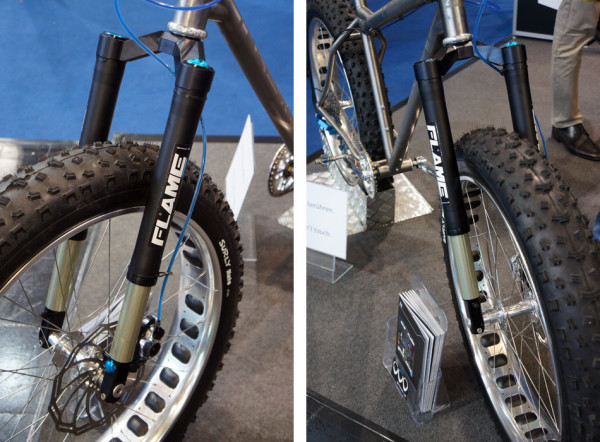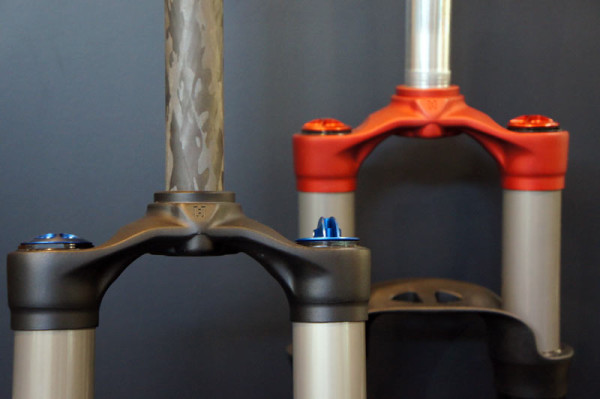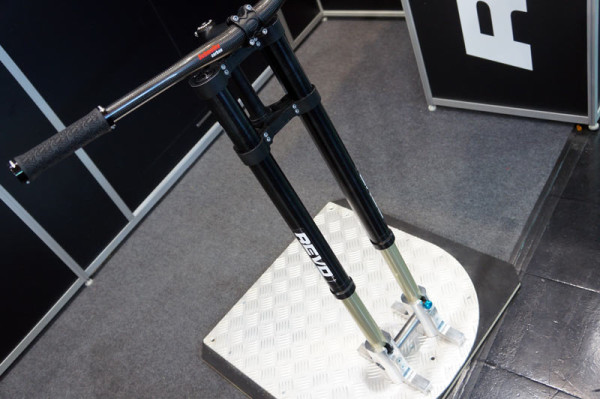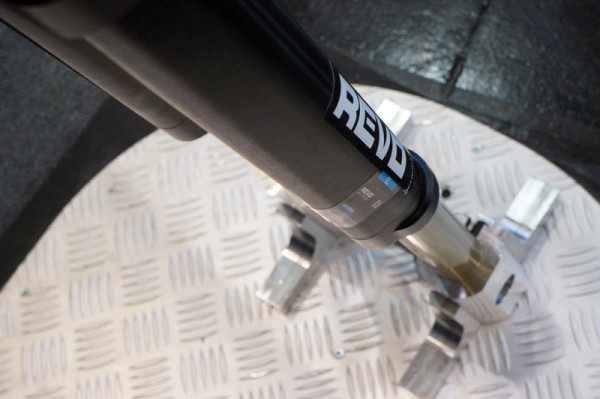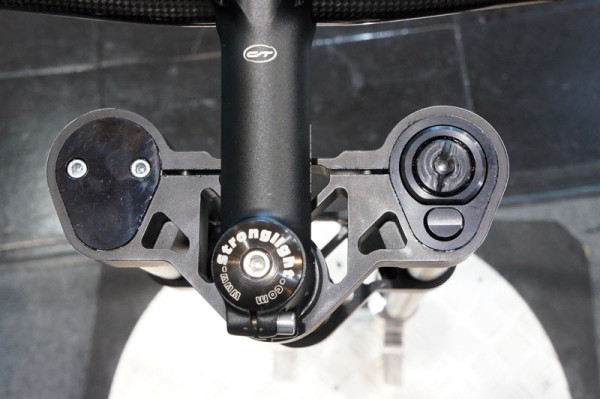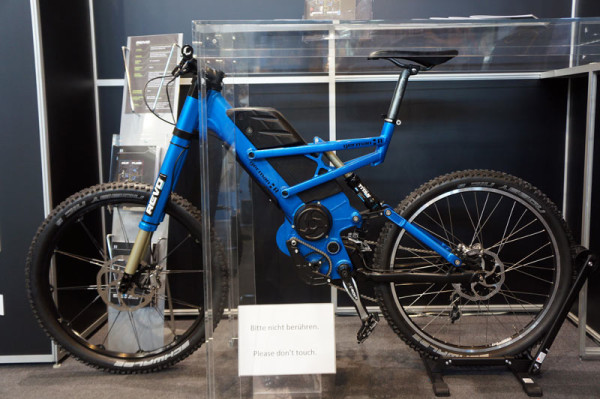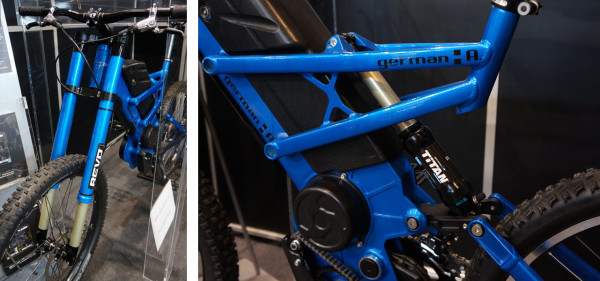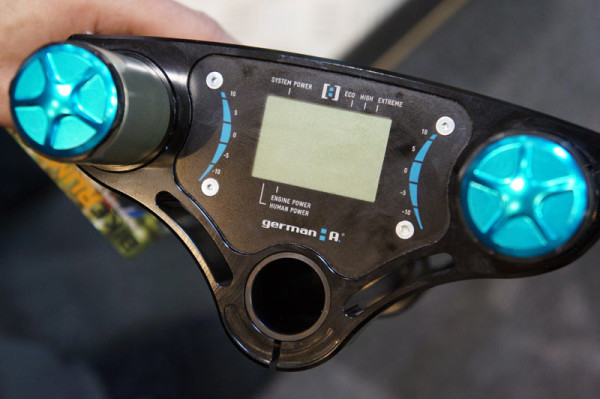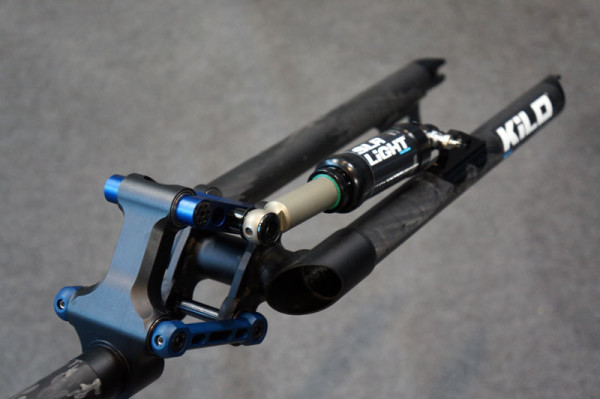Building off their existing inverted fork designs, the new German:A Flame fork takes the internals are from their 130mm 26″ fork, then limits the travel to 100mm to allow proper tire clearance at the crown under full compression.
It’s built around a 142mm front hub and has clearance for 26×4.0 tire. Up top is their travel adjust button, found on all their forks, which uses a dual air chamber with a valve in between. Simply put your weight on the fork and push the button and it’ll drop into its travel. Stop it anywhere you want and release the button and it’ll stay there, working as normal in the reduced travel mode.
But that’s only part of the interesting tech they had on display…
The rebound knob on the bottom uses a very different actuation design. Click the image to enlarge – it threads the ramped pin in or out, allowing a spring loaded adjuster to raise or lower, thus affecting the rebound port inside the damper. Retail is €1,100, which is €100 more than the standard width crown.
If you look at the top image again, you’ll notice the Flame fork’s mounted to a standard straight headtube. Sure, they’re getting rarer by the minute, but German:A’s solution allows the same fork to be used on straight and tapered steerers with no adapters:
Their “tapered” steered uses a 1.5″ lower race that seats directly in the bearing on the frame. It’s only 5mm tall, so if you want to run it on a 1-1/8″ frame, you can, simply putting the crown race on top of the 1.5″ seat. Brilliant.
Announced last year, the new Revo dual crown DH fork has seen a few interesting placements and add-on features. First though, a look at what makes it special:
Inside the uppers, the stanchions change to a tear drop shape to prevent twisting and reduce stresses on the axle. We covered the tech behind this design last year.
It also has the travel adjust button on the right, and it uses the same modified tapered steerer as the other forks, so it’ll fit any frame.
What’s new is that they’ve designed a version for e-bikes, too. Say what you will, there is a market and place for these in some countries.
The integrated handlebars aren’t installed, but they make them to work with their dual crown forks, which allows the center section of the top crown to double as a system display. It’s a clever integration that saves space and makes for a very clean cockpit.
Also not shown here, they mentioned their own electronic suspension damping system. Called Trail Tronic, it was invented in 2006 and 2007 for Trek, but at that time no one wanted to have a battery on their bike. It electronically locks out the fork or shock, then automatically opens up when you hit a bump. They seemed to have a renewed interest in it, what with systems from Rockshox/Lapierre and Magura hitting the market and all.
With all the electronics looking forward, it’s comforting to know they’re still making their parallelogram Kilo suspension forks, and they’re some of the lightest suspension forks in the world…as light as 1,098g!
They said Dean Titanium Bikes is their U.S. distributor, and that they’ll get some OEM spec on Ellsworth bikes for 2015.
